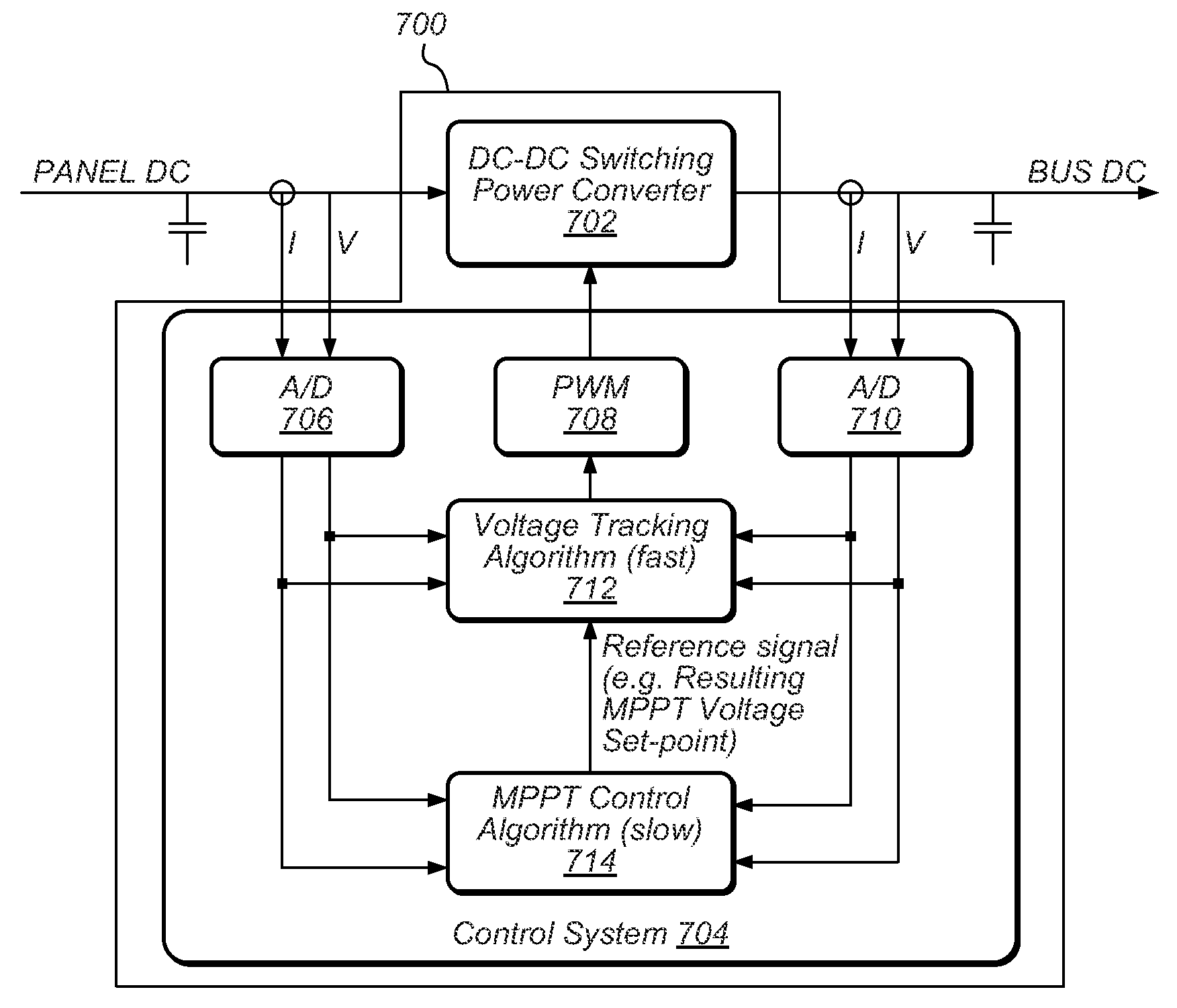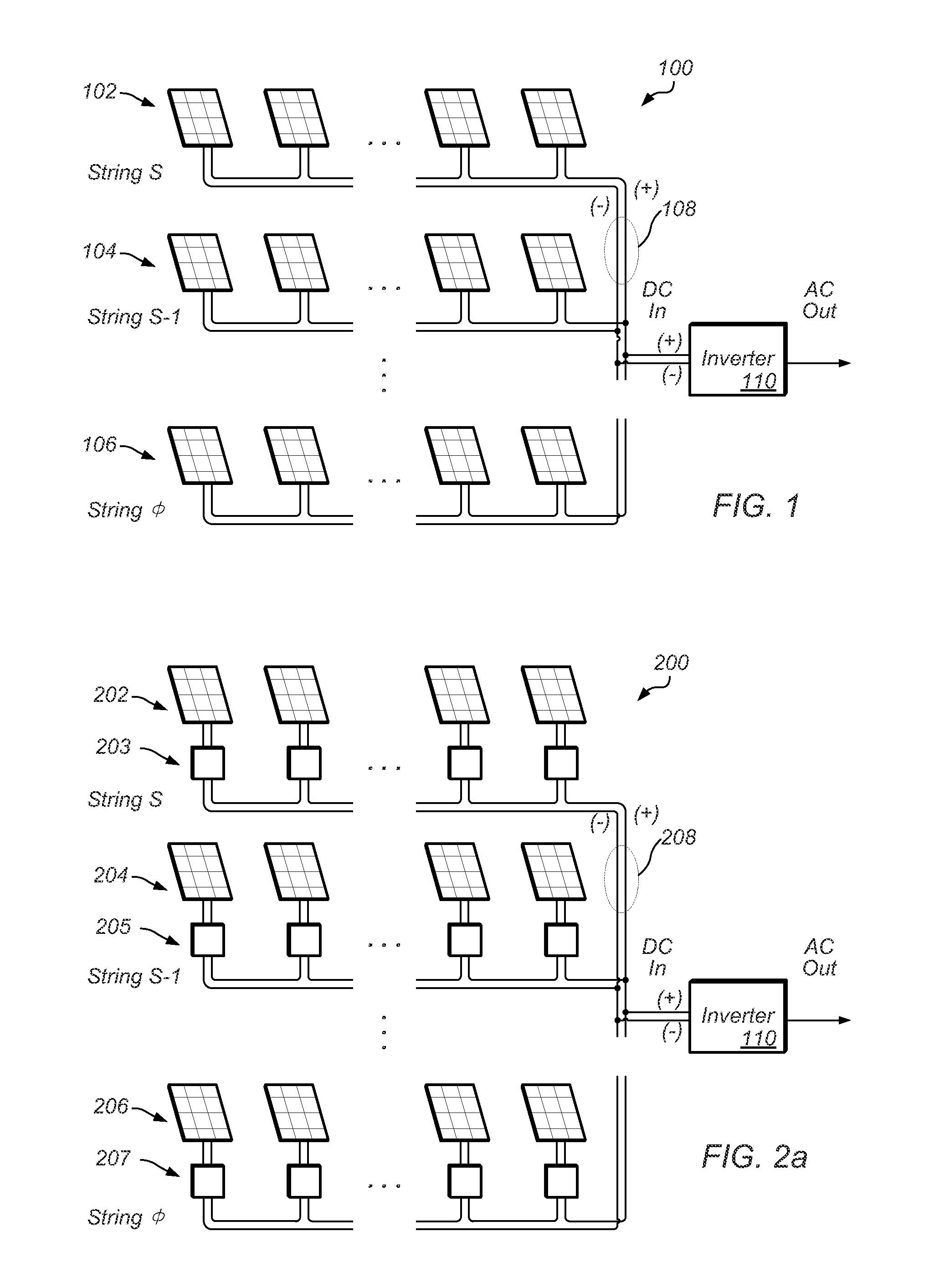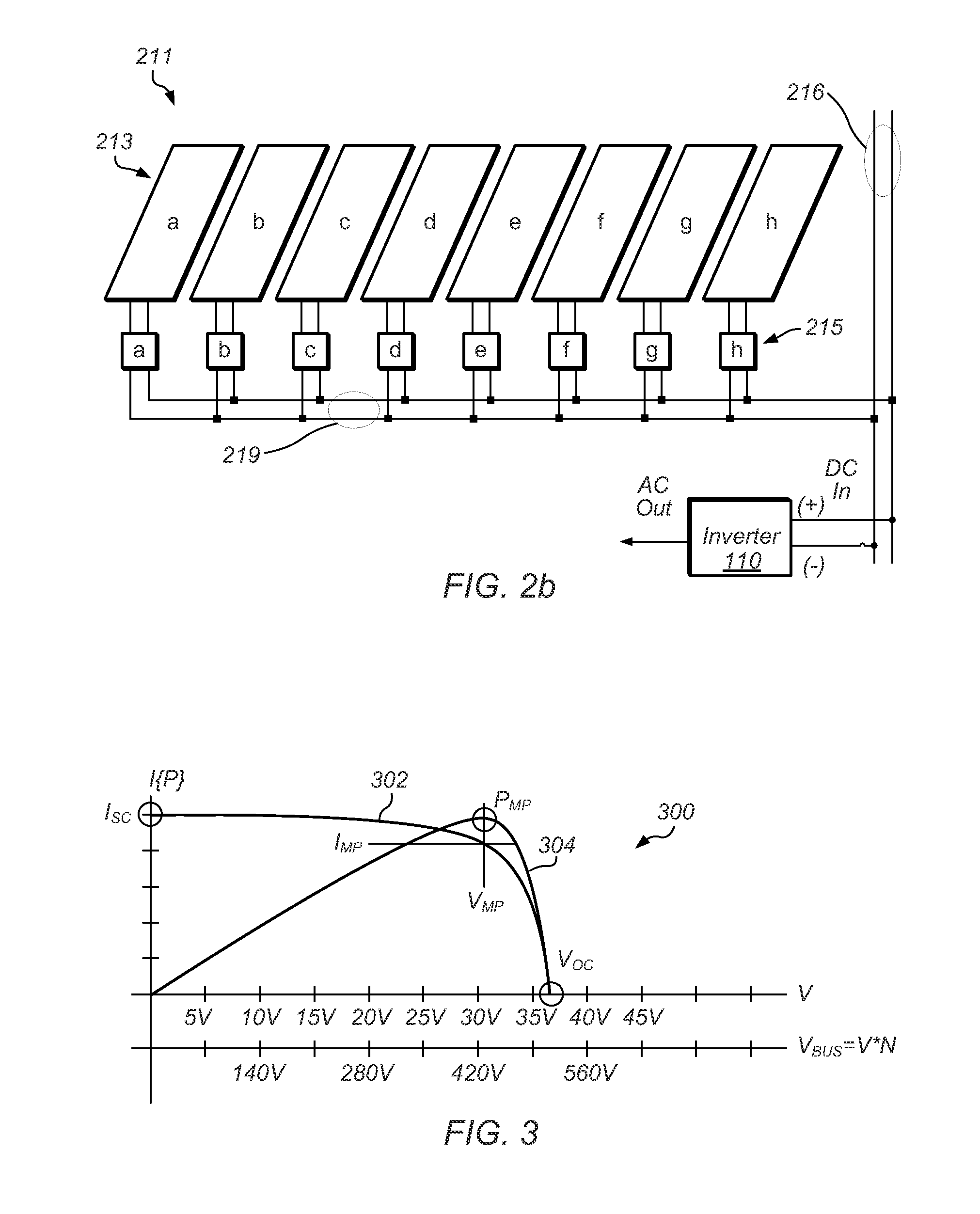Regulation of Inverter DC Input Voltage in Photovoltaic Arrays
- Summary
- Abstract
- Description
- Claims
- Application Information
AI Technical Summary
Benefits of technology
Problems solved by technology
Method used
Image
Examples
Embodiment Construction
[0048]In solar array systems, many non-idealities may be mitigated by utilizing distributed Maximum Power Point Tracking (MPPT). Distributed MPPT usually includes insertion of a DC / DC converter or a similar power converter behind solar panels in the array, most commonly behind each and every solar panel in the array, to adapt the coupled solar panel's power transfer onto a high-voltage bus (typically a high-voltage DC bus) which connects the panels together via the DC / DC converters. A typical solar array 100 is shown in FIG. 1. Solar panel series-strings 102, 104, and 106 are coupled in parallel to bus 108, which may be a DC / DC bus. Each solar panel series-string includes solar panels coupled in series to a respective bus, each of those respective buses coupling to bus 108 as shown to obtain parallel-coupled solar panel series-strings. An inverter 110 is coupled to bus 108 to ultimately drive a connected load, which may be coupled to the output of inverter 110.
[0049]An example of th...
PUM
 Login to View More
Login to View More Abstract
Description
Claims
Application Information
 Login to View More
Login to View More - R&D
- Intellectual Property
- Life Sciences
- Materials
- Tech Scout
- Unparalleled Data Quality
- Higher Quality Content
- 60% Fewer Hallucinations
Browse by: Latest US Patents, China's latest patents, Technical Efficacy Thesaurus, Application Domain, Technology Topic, Popular Technical Reports.
© 2025 PatSnap. All rights reserved.Legal|Privacy policy|Modern Slavery Act Transparency Statement|Sitemap|About US| Contact US: help@patsnap.com



